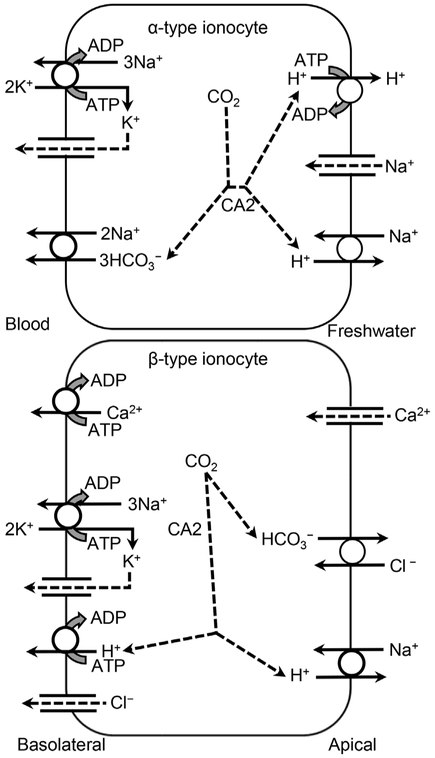Figure 1.
Current model for transporters on α-type and β-type ionocytes of fish such as salmonids. In the α-type ionocyte, along the apical membrane are vacuolar-type H+-adenosine triphosphatase (ATPase; VHA), apical Na+-channel, and Na+/H+-exchanger (NHE), whereas along the basolateral membrane are Na+/K+-ATPase (NKA), K+-channel (KC), and Na+/HCO3−-cotransporter (NBC). In the β-type ionocyte, along the apical membrane are the epithelial Ca2+-channel (ECaC), anion exchanger (AE), and NHE, whereas along the basolateral membrane are plasma membrane Ca2+-ATPase (PMCA), NKA, KC, VHA, and Cl−-channel. The carbonic anhydrase type 2 enzyme is CA2. Dashed arrows indicate diffusion, whereas solid arrows indicate active transport. Arrows that split indicate reactions. Modified from Dymowska et al. [303]. ATP=adenosine triphosphate; ADP=adenosine diphosphate.

